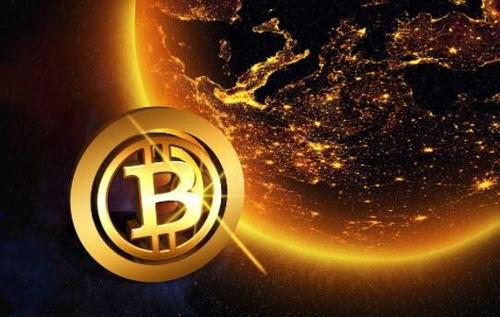Feature your business, services, products, events & news. Submit Website.
Breaking Top Featured Content:
Why Bitcoin Is The Best Weapon Society Has Against Inflation And Wealth Inequality
Authored by Martin Leo Rivers via Forbes.com,
For bitcoin enthusiasts, one of the most compelling things about the cryptocurrency is its ability to side-step fiat monetary systems that dilute the value of cash holdings through inflation.
That isn’t anywhere near as complicated as it sounds. Put very simply, central banks grease the wheels of their economies by continually printing new money. A higher money supply makes it easier for companies to spend and service their debt. But there’s a catch: for every new dollar you add to the spending pool, the buying power of each individual dollar falls proportionally.
Again this is simpler than it sounds: changing the money supply doesn’t magically create wealth or value. If your economy is a nursery and your money supply is crayons, then doubling the number of crayons in the room doesn’t make the kids any richer. They all have twice as many crayons as they had before, so they all double the number they offer when bartering for toys, books and so on. In real terms, nothing has changed because the new supply of money is being evenly shared between everyone in the nursery.
Where things get more complicated – and where bitcoiners have rightly identified a need for a different, fairer system – is what happens when supply and distribution aren’t evenly matched?
Central bankers claim this isn’t a concern, because they contend that all the cash ultimately trickles down to the man on the street – be it through stimulus checks or higher wages or fatter pension funds or whatever other pathway they conjure up. In practice, of course, we know that simply doesn’t reflect reality.
In the real world, billionaires have, by far, been the biggest winners from covid-era money printing. They’ve taken their higher money supply (including vast sums of borrowed money, which is cheaper and easier to obtain when interest rates are low) and they’ve pumped it into inflation-beating asset classes such as the stock market, real estate, collectibles and so on. The middle classes have done the same, but on a smaller scale: building their savings during covid lockdowns and then allocating a healthy chunk of those funds to assets that have appreciated in value nicely.
Now consider the poor and the working classes. What little bonus cash they’ve received during the pandemic has either been spent on survival or stagnated. Unable to get on the property ladder, they can neither benefit from rising house prices nor start building equity by replacing rent (money that goes into someone else’s pot) with mortgage payments (money that goes into their own). Stock markets may, technically, be within their reach, but at a profound handicap due to high transaction fees and a limited understanding of investment strategies (the kind of knowhow that rich people simply pay someone else to worry about).
This imbalance results in one thing: inequality.
If you’re rich, you can take a higher money supply and use it to your advantage. If you’re poor, you really can’t. You’re stuck with whatever cash holdings you have in the new economy. And, as we know, the value of those holdings is actively being diluted through inflation. The more money is printed, the poorer you get.
Interest rates, of course, could save the day – if central banks wanted them to. When the interest rate rises above the inflation rate, any of us can grow the value of our cash simply by dumping it in a savings account. But policymakers don’t want this, because just about the only thing holding up the global economy right now is easy access to debt. As soon as the interest rate paid by borrowers increases, the shaky foundations of our covid-era economic recovery will collapse. Businesses and homeowners who binged on cheap loans will suddenly be unable to make repayments. Waves of bankruptcies and foreclosures will cripple the global economy.
Small wonder that central bankers – none of whom are working class, by the way – prefer the easy option of hammering poor people. “This might not be perfect,” they rationalize, “but everything seems to be stable and everyone I know is doing rather well!” That, in a nutshell, tells you why central banks are the biggest driver of wealth inequality.
So, what to do? Well, as long as central bankers and politicians are in the driving seat, there’s really no way of changing the direction of this economic journey. Those in power will always promote policies that advance their own personal interests, and they will do whatever is necessary to delay a global economic crash – even one that would, in the long-run, probably be good for society as it would precipitate structural reforms to the current, broken system.
If there is a solution, it would have to be an alternative monetary system that’s resilient to both inflation and central bank manipulation.
No prizes for stating the obvious there: civilization has aspired to have such a system for millennia. Trouble is, it’s never been that easy to build a monetary network that’s backed by no-one and yet protects the interests of everyone so convincingly that ordinary people will trust it with their life savings. Never, that is, until 2009, when the launch of the bitcoin monetary network gave the world its first taste of decentralized blockchain technology.
The boring bit
Convincing readers about the technical benefits of blockchain is a bit like convincing overweight people about the health benefits of dieting. The proof is in the pudding, as it were. And the average person on the street has no more inclination to become an expert in food science – the ‘how’ or ‘why’ a given diet is effective – than they do computer programming.
That said, you can’t understand the genius behind bitcoin without having at least a basic grasp of the revolutionary nature of blockchain technology – so here goes.
Trust is everything. I’ve already alluded to the fact that creating a monetary system from scratch is virtually impossible because money has no value unless enough people believe it has value. The easiest way to foster that belief is to get a government to pledge to uphold – or back – its value (think of that “promise to pay the bearer on demand” you see on banknotes). Another, more tenuous way is to come up with a universally appealing asset that has a fixed supply. Gold ticks this box nicely: it’s aesthetically attractive; it can’t be forged because of its unique density; and it can’t be manufactured by anyone, so there’ll only ever be as much gold on the planet as the planet already holds (shiny asteroids notwithstanding).
Then again, gold is a pain in the ass. It’s heavy, so it’s a burden to carry and transfer. It’s not easily divisible, so it’s hard to pay precise amounts with it. Not many people do their weekly shop with gold. But what if you could create a digital version of gold that weighs nothing, moves at the speed of light, and is divisible to the tiniest fraction of value. Sounds great. Also impossible. Until 2009.
If you only understand one thing about what blockchain technology does, let it be this: for the first time in history, blockchains give us genuinely immutable data.
That means the information contained within them cannot be changed. Ever. How they achieve this takes time to understand: it’s to do with the decentralized nature of the ledger, which lists all the transactions ever made on the blockchain and is secured by 1) the number of copies in existence (full nodes, all of which are cross-checked against each other); 2) the process through which new data is written (cryptographic encryption); and 3) the energy consumption of the network (the hashrate, which makes it impossible to overpower – or change the course of – the encryption process). I might have lost you there. But the end result isn’t difficult to grasp. Once you have immutable data, you have the ability to create autonomous digital money.
By ensuring that bitcoin’s transaction history can never be altered, mankind has created a digital asset that satisfies five of the criteria for money: it’s durable, portable, scarce, divisible and fungible (interchangeable). The final criteria – acceptability, or the willingness of people to conceive of bitcoin as real money – will be determined not by its technical traits but by humanity’s attitude towards it. In an increasingly digital age, the outlook is favorable.
Bitcoin’s detractors – and there are many; typically old, middle class people who’ve become very rich from the status quo – cite a different definition of money: that it must be embraced by society as a medium of exchange; a unit of account; and a store of value.
Bitcoin fails on all fronts, they say, as too few people use it on a daily basis, and the price is too volatile to measure or store value. Maybe so, today. But it’s also attained a market cap of $1 trillion in just 12 years. Is that not rather swift progress?
And what of the dollar and the other fiat currencies? Are they convenient mediums of exchange across international borders? Do they give us stable, predictable prices year after year? Most important of all, are they a store of value in an era of high inflation? If you’ve ever complained about the rising cost of living, you already know the answer.
Tyler Durden
Mon, 11/22/2021 – 15:05
Continue reading at ZeroHedge.com, Click Here.


